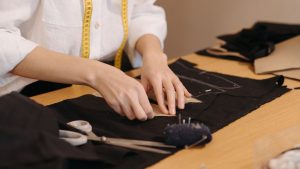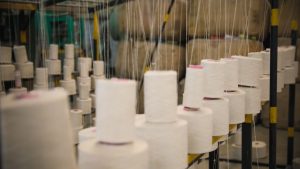How to know if your school’s uniforms are ethically sourced

Knowing the fabric’s origins and manufacturing standards will help you to know if your school’s uniforms are ethically sourced.
School uniforms are an integral part of the educational experience, fostering a sense of unity and equality among students.
However, social consciousness demands that we scrutinise the ethical sourcing of these uniforms. Are the fabrics sustainably produced? Do the manufacturers prioritise fair labour practices?
This article will explore the key factors to help you determine if your school’s uniforms are ethically sourced.
1. The landscape of ethical sourcing in the UK
The UK has witnessed a growing awareness of ethical sourcing across various industries, including fashion. Ethical considerations encompass fair labour practices, environmental sustainability, and social responsibility.
When it comes to school uniforms, we need to understand the broader context of ethical sourcing in the UK.
UK Legislation on ethical sourcing
The UK government has implemented legislation and guidelines to address ethical sourcing issues, including the Modern Slavery Act. Schools and businesses are encouraged to ensure their supply chains are free from forced labour and exploitation. Familiarise yourself with these regulations to understand the legal framework that should guide ethical sourcing practices.
Consumer awareness and demand
Consumer awareness in the UK has grown significantly, with more individuals expressing concern about the ethical implications of their purchases. This shift in mindset has influenced companies to adopt more transparent and ethical practices. By staying informed and vocalising concerns, consumers can drive positive change in the fashion industry, including school uniform suppliers.
2. Researching fabric origins
The journey toward an ethically sourced school uniform begins with an examination of the fabrics used. Common materials include cotton, polyester, and blends of various fibres. Investigate the origins of these materials to assess their environmental and social impact.
Organic cotton certification
Organic cotton is grown without the use of synthetic pesticides or fertilisers, promoting soil health and reducing the environmental impact of cotton cultivation. Look for certifications such as GOTS (Global Organic Textile Standard) or Soil Association Organic to ensure the organic integrity of the cotton used in your school uniform.
Recycled polyester
Polyester, a synthetic fabric, is prevalent in school uniforms. While traditional polyester raises environmental concerns, recycled polyester offers a more sustainable alternative. Check for certifications like the Global Recycled Standard (GRS) to ensure that the polyester used in your uniform is derived from post-consumer recycled materials.

3. Evaluating manufacturing practices
Assessing the conditions under which school uniforms are manufactured is essential in determining their ethical sourcing. Fair labour practices and transparent supply chains are key factors in this evaluation.
Fair labour standards
Choose school uniform suppliers that adhere to fair labour standards. Look for certifications such as Fairtrade or SA8000. These indicate that workers involved in the production are treated ethically, receive fair wages, and operate in safe conditions. These certifications also often forbid child labour and discrimination.
Transparent supply chains
Prioritise school uniform suppliers that offer transparency in their supply chains. Companies that openly share information about their sourcing and production processes are more likely to be committed to ethical practices. Transparency enables consumers to trace the journey of their uniforms, ensuring alignment with ethical standards.
4. Certifications and labels
Certifications and labels provide tangible evidence of a school uniform’s adherence to ethical sourcing standards. Familiarise yourself with these labels to make informed choices.
Fairtrade Foundation
The Fairtrade Foundation focuses on ensuring fair prices and working conditions for producers. When you see the Fairtrade label on your school uniform, it signifies that the garment has been produced under ethical conditions, benefitting workers in the supply chain.
OEKO-TEX certification
OEKO-TEX Standard 100 certifies that textile products, including school uniforms, have been tested for harmful substances. This certification ensures that the final product is safe for human health and does not contain harmful chemicals.
Ethical Trading Initiative (ETI) base code
The ETI Base Code is a set of principles that companies can adopt to ensure ethical working conditions. Some school uniform suppliers may adhere to the ETI Base Code, demonstrating their commitment to responsible business practices.
5. Environmental impact
In addition to fair labour practices, consider the environmental impact of your school uniform. Sustainable practices should extend beyond sourcing materials to encompass the entire life cycle of the garment.
Life cycle assessment
While conducting a comprehensive life cycle assessment (LCA) for your specific school uniform may be challenging, consider brands that communicate their efforts to reduce environmental impact. Look for companies committed to sustainable practices, including minimising carbon footprints, water usage, and waste throughout the production process.
Sustainable packaging
The sustainability of your school uniform isn’t limited to the garment itself. Consider the packaging in which uniforms are delivered. Choose suppliers that use minimal and eco-friendly packaging, reducing unnecessary waste.
6. Community engagement
A truly ethical school uniform supplier actively engages with and contributes positively to the communities in which it operates. This engagement goes beyond fair labour practices to include broader social responsibility initiatives.
Community development initiatives
Research whether the school uniform manufacturer participates in community development initiatives. This could involve investing in local education, healthcare, or infrastructure projects that benefit the communities involved in the production process.
Social responsibility reports
Look for school uniform suppliers that publish social responsibility reports. These reports provide insights into a company’s efforts to make a positive impact on society, showcasing their commitment to ethical practices beyond mere compliance.
7. Advocating for ethical sourcing
If you discover that your school’s uniform falls short in terms of ethical sourcing, consider advocating for change. Engage with your school administration, fellow students, and parents to raise awareness about the importance of ethically sourced uniforms. Encourage open dialogue and collaboration with suppliers to implement positive changes in the uniform sourcing process.
Conclusion
As consumers and students in the UK, our choices play a crucial role in shaping the ethical landscape of school uniforms.
To know whether your school uniforms are ethically sourced, we need to know the origins of fabrics, study manufacturing practices, and consider environmental impact.
Choose uniforms made from organic or recycled materials. And they should be manufactured by companies with fair labour practices and a commitment to transparency and sustainability.
Support certifications and labels that vouch for ethical standards. Don’t hesitate to ask questions about the sourcing practices of your school’s uniform supplier.
In doing so, we ensure the wellbeing of those involved in the production process. We also contribute to a more sustainable and socially responsible future.
Let your school uniform symbolise unity among students and your commitment to ethical principles.
